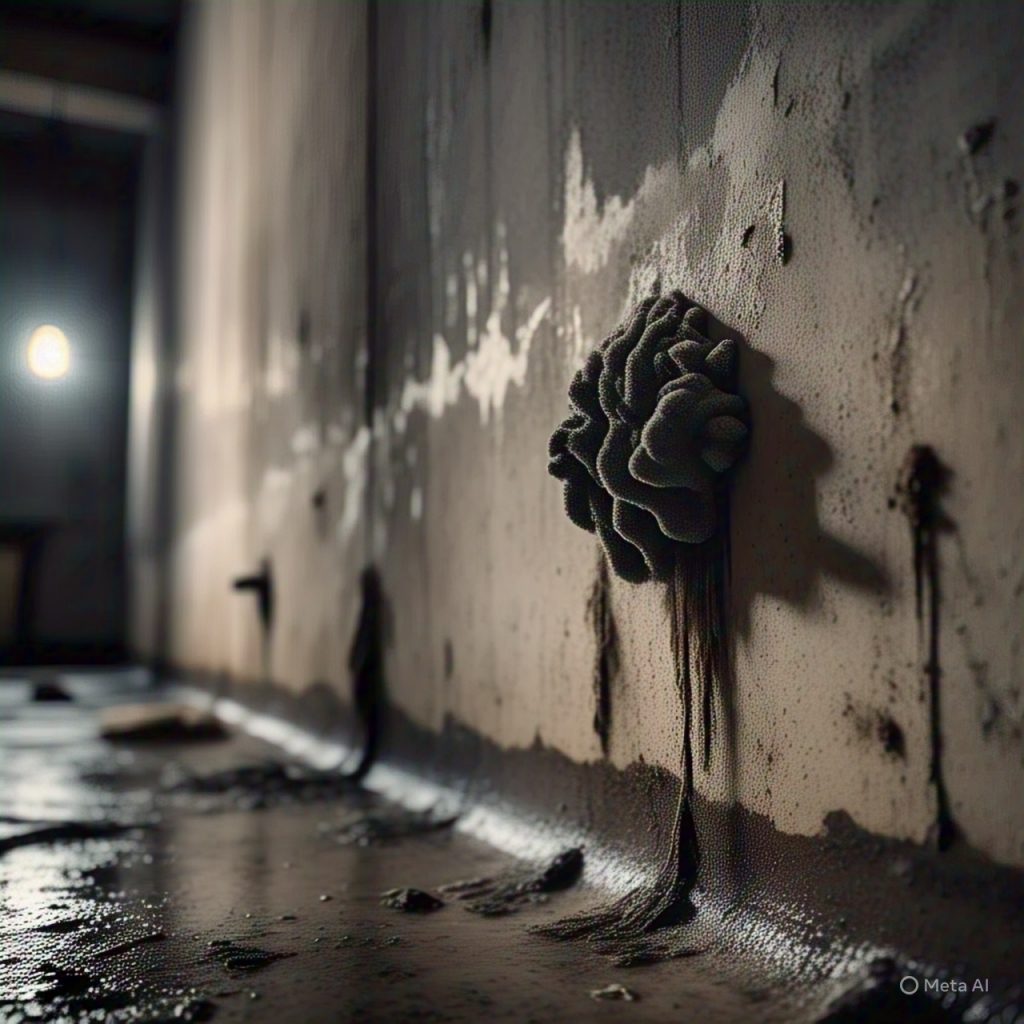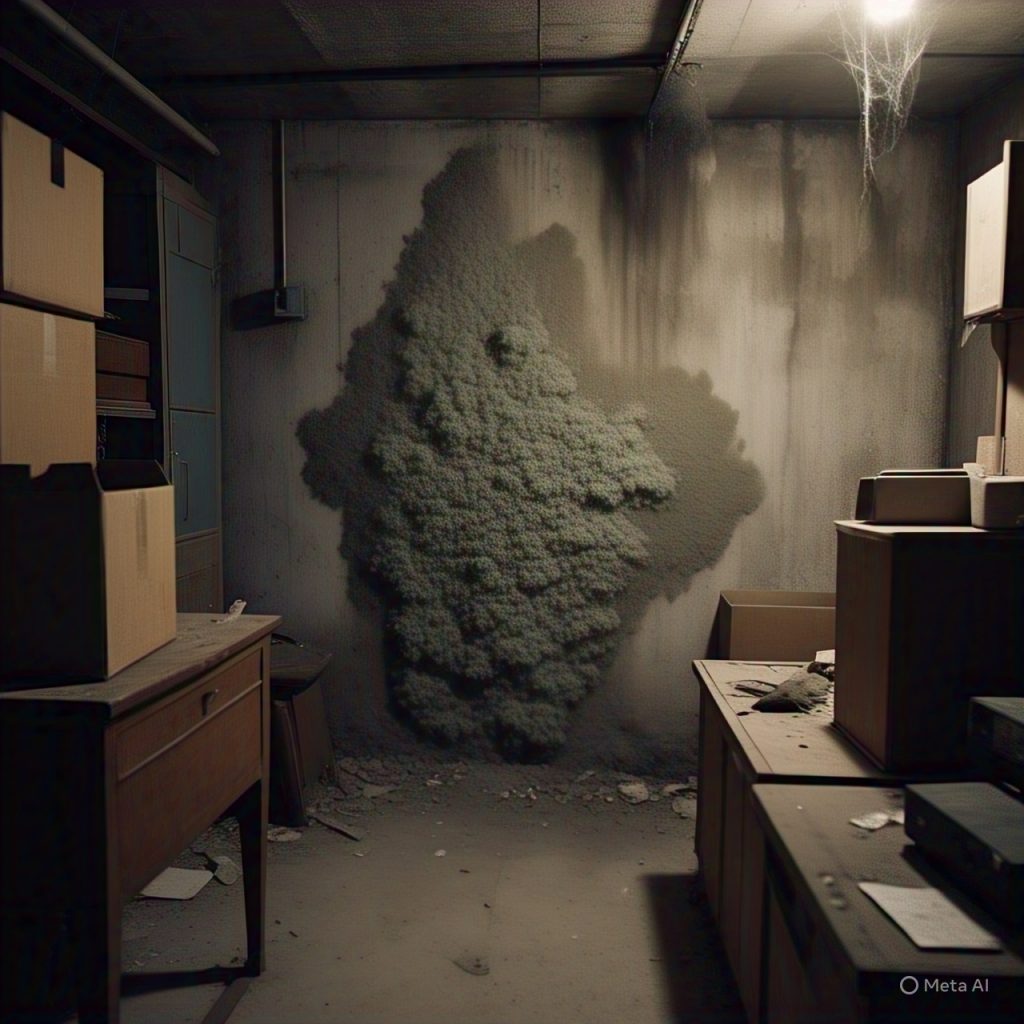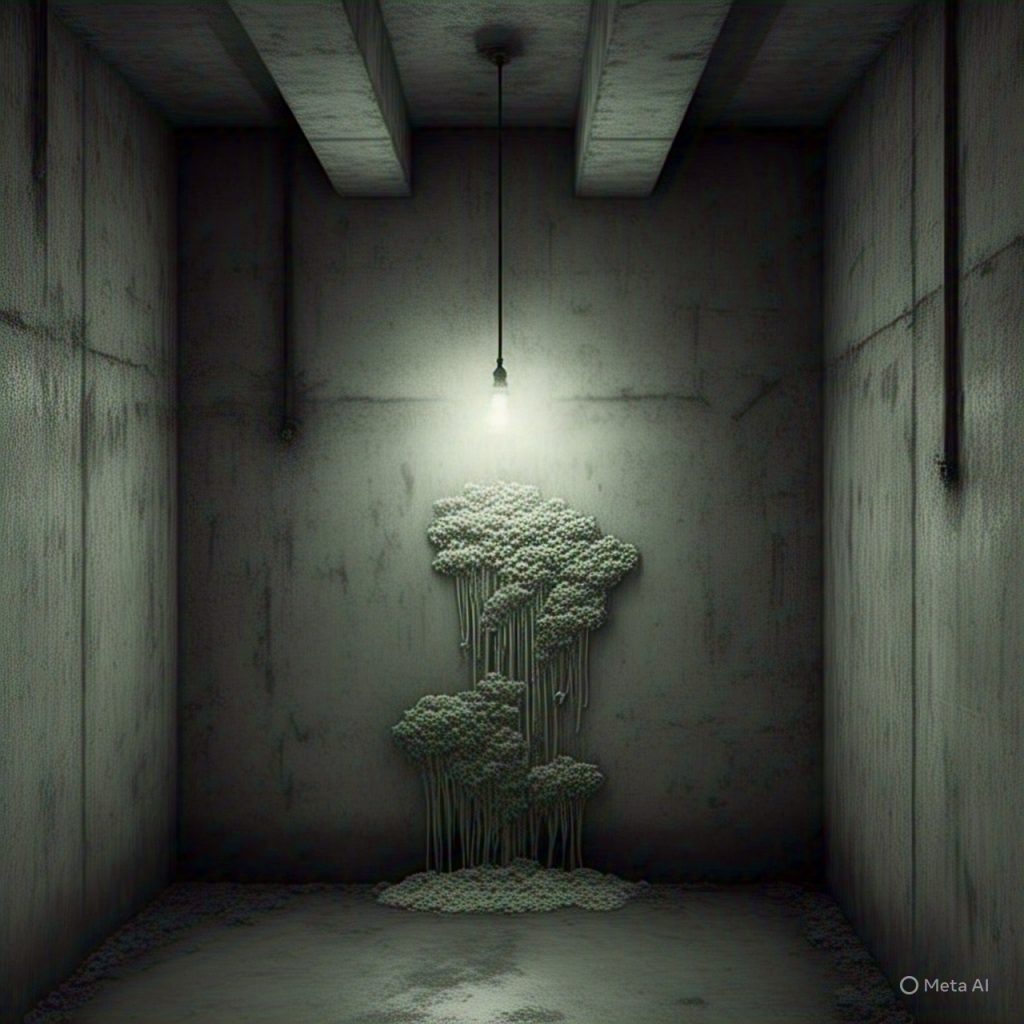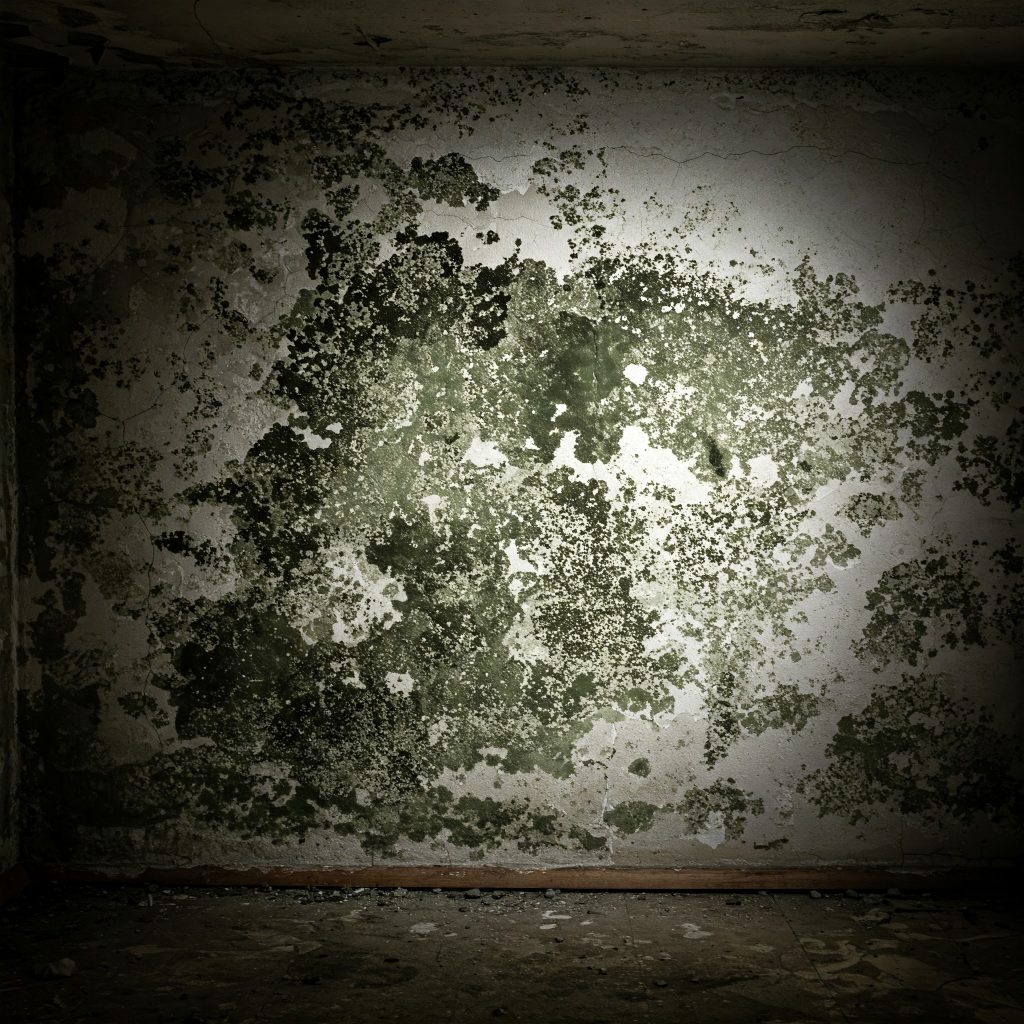Why Your Basement Could Be Hiding a Silent Health Hazard Right Now
Introduction
That cool, slightly damp smell you notice when you step into your basement?
It might seem harmless — even nostalgic. But in reality, it could be the first sign of a dangerous mold infestation that you don’t see… yet.
Basements are often overlooked when it comes to home maintenance. Out of sight, out of mind — until you find your family getting sick, your walls crumbling, or your home’s air quality degrading. The truth is: basements are the #1 breeding ground for mold in homes across the U.S especially in Indiana.
Let’s dive into why that is, how it starts, what signs to watch out for, and — through a powerful fictional story — why ignoring it could cost you more than just money.

The Rodriguez Family’s Basement Surprise
In Cincinnati, Ohio, the Rodriguez family had just welcomed a new baby girl, Mia. As the seasons changed from spring to a muggy summer, Maria Rodriguez noticed that Mia was always congested and coughing — even when upstairs in their home.
They ruled out allergies, pets, and dust. But the symptoms persisted.
Downstairs, their basement was unfinished but used for laundry and storage. It always had that wet concrete smell. Maria thought it was normal. After all, “basements are supposed to smell like that,” she told her husband, Dan.
One day, while doing laundry, Maria noticed a dark patch on the far wall. It was spreading. They called a professional.
The inspector used a moisture meter and infrared camera. What they found shocked them.
Mold was growing behind the drywall, in the HVAC ductwork, and even on old furniture. Moisture from poor drainage and a hidden pipe leak had created the perfect storm for mold.
The cost of mold remediation and structural repair? $18,000.
The cost of Mia’s health? Priceless.
Why Basements Are the #1 Mold Breeding Ground
1. Dark, Damp, and Poorly Ventilated
Mold thrives in areas with minimal light, limited airflow, and high humidity — all trademarks of an average basement.
2. High Moisture from Ground Contact
Basements are built below grade, meaning they’re in direct contact with soil. Even with waterproofing, ground moisture seeps through cracks, concrete, and foundation joints.
3. Leaks Go Unnoticed
Water heater leaks, washing machine overflows, and pipe condensation often start small. In basements, those leaks are often ignored for weeks or months.
4. Clutter and Stored Items Trap Moisture
Boxes, furniture, and unused equipment reduce airflow and trap condensation — giving mold a buffet of organic material to grow on.
Common Types of Basement Mold

- Aspergillus – triggers allergies and respiratory issues
- Cladosporium – grows on fabrics, HVAC, wood
- Stachybotrys chartarum (Black Mold) – toxic, thrives on wet drywall or wood
Health Risks of Basement Mold Exposure
- Chronic coughing, wheezing, or sneezing
- Headaches, dizziness, and fatigue
- Skin rashes and itchy eyes
- Worsened asthma or lung conditions
- Cognitive fog or sleep issues
For babies, seniors, and immune-compromised individuals, the health risks escalate significantly.
How to Know If Mold is Growing in Your Basement
Here are early warning signs:
- Musty smell that gets stronger with time
- Discoloration on walls or floors (black, green, brown patches)
- Peeling paint or wallpaper
- Condensation on pipes and walls
- Water stains on the ceiling or baseboards
- Persistent humidity above 60%
- Increased allergic reactions indoors
Common Questions People Ask
- “Why does my basement smell musty?”
- “Is mold in my basement dangerous?”
- “How do I know if there’s mold in the basement?”
- “What causes mold in the basement?”
- “How can I get rid of basement mold naturally?”
These are the exact queries AI search engines and voice assistants answer, so let’s give clear, optimized answers below.
What To Do if You Suspect Mold in Your Basement
1. Inspect Visually and Smell the Space
Focus on corners, behind furniture, near HVAC vents, and pipes. Smell for anything earthy, musty, or damp.
2. Use a Moisture Meter
Check humidity and moisture levels in drywall, flooring, and near windows. Aim for < 50% humidity.
3. Limit Moisture Sources
Fix leaks, insulate pipes, and use exhaust fans if you have a washer/dryer installed.
4. Remove Affected Items Safely
Dispose of mold-covered cardboard boxes, rugs, or old books. Wear gloves and a respirator when handling them.
5. Call a Mold Remediation Professional
If mold covers more than 10 square feet or has penetrated your drywall, flooring, or air ducts — it’s time to call in experts. DIY won’t cut it.
Basement Mold Prevention Tips
- Seal cracks in walls and floors with waterproof sealant
- Use a dehumidifier year-round
- Ensure gutters and downspouts direct water away from the foundation
- Slope soil away from the home to prevent water pooling
- Install a sump pump with a battery backup
- Use mold-resistant paint and materials
- Schedule annual basement inspections
Why You Shouldn’t Ignore Hidden Basement Mold

Like the Rodriguez family learned — hidden mold isn’t just a property issue. It’s a health hazard, and it spreads silently through air vents and walls, infecting your indoor air quality.
For immediate assistance with Mold restoration, contact PuroClean Disaster Restoration, Call (+1) 317-467-4436 or (+1) 260-263-9788 for Fort Wayne location.
PuroClean Disaster Restoration has over 19 years of experience in the mold removal, remediation and mitigation industry, with over 100 5 Star reviews on Google serving Indianapolis. Click on this link to see it’s online reviews and ratings.
The longer it goes untreated:
- The larger the infestation
- The higher the remediation cost
- The greater the health impact
FAQ Section
1. How does mold start in a basement?
Mold begins growing when moisture, warmth, and organic material (like wood, drywall, or fabric) combine in a poorly ventilated space. Common causes include groundwater seepage, pipe leaks, condensation, and poor air circulation — all of which basements are prone to.
2. Is it safe to stay in a house with mold in the basement?
It depends on the extent and type of mold. Small, contained patches might not be hazardous short-term, but long-term exposure — especially to black mold — can harm your health. Mold spores travel through HVAC systems and can impact the entire home’s air quality.
3. Can I clean basement mold myself?
If the moldy area is under 10 square feet, and the surface is non-porous (like tiles), you can clean it using a mix of white vinegar and water or hydrogen peroxide. Always wear gloves, goggles, and an N95 mask. However, if it’s extensive or on drywall, insulation, or HVAC systems — call a professional.
4. What’s the best way to prevent mold in basements?
The key is moisture control. Dehumidify, insulate pipes, fix leaks immediately, and ensure proper drainage around your home. Using mold-resistant paint and avoiding clutter also helps airflow and reduces mold food sources.
5. Does a dehumidifier kill mold?
No. A dehumidifier won’t kill existing mold, but it helps prevent new mold from growing by keeping humidity levels below 50%. It’s a great tool for mold prevention, but you still need to remove existing mold thoroughly.
6. What’s the cost of professional basement mold remediation?
Costs range from $500 to $6,000, depending on the size of the infestation and how deep it’s embedded (e.g., drywall, HVAC). Severe infestations with structural damage can cost $10,000 or more, especially if full demolition and reconstruction are needed.
7. Can mold in the basement affect the upstairs rooms?
Yes. Mold spores travel through air vents, cracks, and open doorways. You may not see it, but you’ll feel it — via respiratory symptoms, odors, or allergic reactions. Mold in one area can compromise the entire home.
8. How quickly does basement mold grow?
Mold can begin growing within 24 to 48 hours of water exposure. That’s why early detection and moisture control are crucial to preventing outbreaks.
Conclusion: Don’t Let Your Basement Become a Breeding Ground
Your basement may be “out of sight,” but it should never be out of mind.
If you notice persistent musty odors, increased allergy symptoms, or visible signs of mold — act now. The longer mold lingers, the more dangerous and expensive it becomes.
Take it from the Rodriguez family: the cost of ignoring the signs isn’t just money — it’s your family’s health and your home’s safety.



 PuroClean Disaster Restoration
PuroClean Disaster Restoration